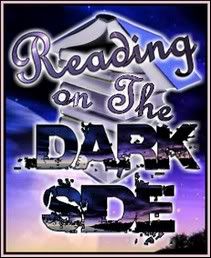During Dakas' Day, Tantric Buddhists make offerings to the Dakas (male embodiments of enlightened energy) and Father Tantra; day to unite will and power to manifest positive social change and environmental healing. [Observed primarily by Tantric initiates.] [a/k/a Daka Puja, Father Tantra Puja, Tsog, Tsok]
However, Tibetan Lamas trained in the Gelug school, such as Sermey Khensur Lobsang Tharchin and Kelsang Gyatso, and those of the Karma Kagyu school such as Khenpo Karthar Rinpoche, write freely of "dakas and dakinis". Thubten Yeshe clarifies their meaning: "what are dakas and dakinis? Simply speaking they are males and females who possess advanced experiences of tantric transformation and control and are therefore able to increase the blissful wisdom of a highly qualified practioner".
There is some disagreement amongst Western scholars as to the meaning of the term daka. Some see it as the same as a dakini but in its male embodiment, and thus to be the partner of a female practitioner or yogini, or to identify a daka as the consort of a dakini. However in consort yoga, the consort of a dakini is a yogi. For example, the most famous instance of consort yoga in Tibetan tantra involved its founder, the Indian Mahasiddha Padmasambhava and Yeshe Tsogyal, a Tibetan princess and yogini. Padma Sambhava was known as a yogi and Yeshe Tsogyal as a dakini. Miranda Shaw, associate professor of religion at University of Richmond, said in an interview in 1995, "In Sanskrit there is only one word, Dakini. There are only female Dakinis... there is no male Dakini. It is an impossibility and a contradiction in terms." Whereas Jan Willis in the chapter Ḑākinī; Some Comments on Its Nature and Meaning points out that ""she" is not "female". Though the ḍākinī assuredly most often appears in female form... this is but one of the myriad of ways Absolute Insight chooses to make manifest its facticity".
However, Tibetan Lamas trained in the Gelug school, such as Sermey Khensur Lobsang Tharchin and Kelsang Gyatso, and those of the Karma Kagyu school such as Khenpo Karthar Rinpoche, write freely of "dakas and dakinis". Thubten Yeshe clarifies their meaning: "what are dakas and dakinis? Simply speaking they are males and females who possess advanced experiences of tantric transformation and control and are therefore able to increase the blissful wisdom of a highly qualified practioner".
Lord Shiva as Nataraja:
The depiction of Shiva as Nataraja (Tamil: நடராஜா, Kannada: ನಟರಾಜ, Telugu: నటరాజు, Sanskrit: naṭarāja, "Lord of Dance") is popular. The names Nartaka ("dancer") and Nityanarta ("eternal dancer") appear in the Shiva Sahasranama. His association with dance and also with music is prominent in the Puranic period. In addition to the specific iconographic form known as Nataraja, various other types of dancing forms (Sanskrit: nṛtyamūrti) are found in all parts of India, with many well-defined varieties in Tamil Nadu in particular. The two most common forms of the dance are the Tandava, which later came to denote the powerful and masculine dance as Kala-Mahakala associated with the destruction of the world. When it requires the world or universe to be destroyed, Lord Śiva does it by the tāṇḍavanṛtya, and Lasya, which is graceful and delicate and expresses emotions on a gentle level and is considered the feminine dance attributed to the goddess Parvati. Lasya is regarded as the female counterpart of Tandava. The Tandava-Lasya dances are associated with the destruction-creation of the world.
The depiction of Shiva as Nataraja (Tamil: நடராஜா, Kannada: ನಟರಾಜ, Telugu: నటరాజు, Sanskrit: naṭarāja, "Lord of Dance") is popular. The names Nartaka ("dancer") and Nityanarta ("eternal dancer") appear in the Shiva Sahasranama. His association with dance and also with music is prominent in the Puranic period. In addition to the specific iconographic form known as Nataraja, various other types of dancing forms (Sanskrit: nṛtyamūrti) are found in all parts of India, with many well-defined varieties in Tamil Nadu in particular. The two most common forms of the dance are the Tandava, which later came to denote the powerful and masculine dance as Kala-Mahakala associated with the destruction of the world. When it requires the world or universe to be destroyed, Lord Śiva does it by the tāṇḍavanṛtya, and Lasya, which is graceful and delicate and expresses emotions on a gentle level and is considered the feminine dance attributed to the goddess Parvati. Lasya is regarded as the female counterpart of Tandava. The Tandava-Lasya dances are associated with the destruction-creation of the world.





No comments:
Post a Comment